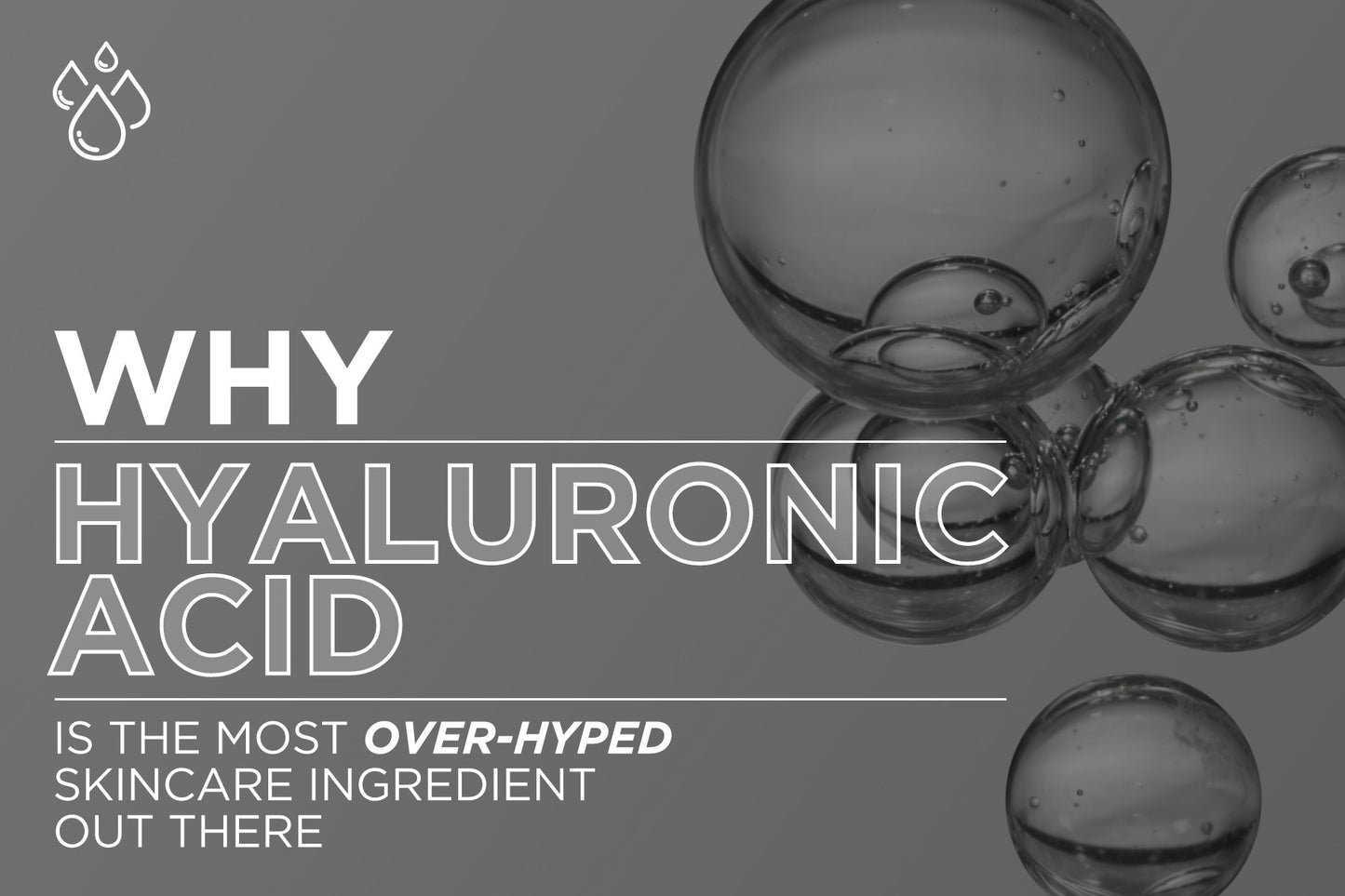
When the temperatures change and that dreaded dry and tight skin feeling kicks in, I am always inundated with queries from my patients about the latest and greatest hydrating ingredients that can cure dry, damaged, dull and dehydrated skin.
The unsexy, cold hard truth is that the skincare industry is full of fads and full of fraud. New and shiny does not always mean it works!
For instance, take hyaluronic acid. More like hype-luronic acid!
This has got to be the most overhyped hydrating ingredient in skincare. Don’t get me wrong, HA delivers moisture, and is especially helpful when used to treat facial volume loss in the form of injectables that are placed deep in the skin. And the dermis!!!
BUT evidence to support the long term water-binding effect of hyaluronic acid when applied to the surface of the skin in skincare, in comparison to far less flashy ingredients like good old glycerin, is really not that great.
In fact it can have the opposite effect. HA in high concentration serums can actually dry the skin out in low humidity environments!!!! Yep it can suck the water out of your dermis below.
What’s more, it's incredibly expensive.
If you want more of a low down I recommend listening to Dr Shereene Idriss.

At the end of the day, hyaluronic acid has limited long term hydrating benefits.
Fact 1: Hyaluronic acid can bind over 100 times its molecular weight in water.
Fact 2: BUT, this benefit only lasts for a matter of hours, before HA is rapidly broken-down in the skin by an enzyme known as hyaluronidase.
On top of that this benefit is when the HA sits in the dermis and can gain moisture from the bloodstream. When on the surface its molecular weight is TOO big to absorb to get into the dermis. In fact if it's a low humidity environment it will usually have the reverse effect! That is it dries out the skin!
These latest “hot” new skincare ingredients peddled by marketing suits have NOTHING on some of my old favourite, tried and tested ingredients. That is good old Glycerin!!!
Far superior as a humectant (ie moisture binding ingredient). We use this oldie but a sensational goodie across the range.
You’ll find it in my Concentrated Moisturiser+ and Concentrated Hydration+, Concentrated Cleanser, Concentrated Illuminator and Concentrated CC+ Cream SPF 30.
Let’s explore the tried and tested moisture-binding ingredients we bank on at DrNC proven by Dermatological Science:
Glycerin
It’s an oldie, but a goodie! This ingredient stars in almost every moisturiser and product in the range, and it works by drawing moisture to the top layers of the skin, reducing the appearance of fine lines and wrinkles, while improving the function of your skin. Its benefits are LONG LASTING!
It has the capacity to biologically change and improve your skin, even after you stop using it!!! It's considered a primary humectant and water binder, while hyaluronic acid is considered to be a secondary humectant to complement glycerin, not replace it. Glycerin mimics the skin’s natural moisturising factors and draws water out of the atmosphere, binding it to your skin.
Medical Grade Lanolin
Lanolin is one of those ingredients that everyone’s grandma has in her cabinet, and for a good reason. It’s the oil derived from the wool of sheep, and anecdotally it was the solution for stretch marks and ageing for women in the Australian countryside. It is a healing product that delivers intense moisture and soothes even the driest, chapped skin. Its structure and function mimics that of our natural sebum, therefore it integrates seamlessly into our skin. Its role in moisturisers is that of an occlusive, to rebuild and protect the barrier layer, while holding moisture into the skin. Despite old school beliefs and fear-mongering around “non-comedogenic” products, lanolin won’t clog your pores, because it actually mimics our skin’s natural sebum. While decades ago there were reports of some having allergic reactions to lanolin, now we use more sophisticated “medical grade” variants, which have been purified and therefore no longer have any allergic potential.
Shea Butter
Derived from the karite tree, shea is rich in fatty acids (these are an essential part of our natural lipid system in our epidermis) and it’s precisely these fatty acids that nourish and soothe dry cracked skin, locking in moisture. Raw shea butter has a grocery list of benefits (similar to aloe vera) including the treatment of sunburn, insect bites, dry cracked skin on the hands and feet, and even acne.
Cocoglycerides
A complicated name, so let’s simplify it - these ingredients are derived from coconut oil. We have all heard of the moisturising benefits of coconut oil, but when this ingredient is added to a moisturiser, it has more of an effect on the way the product glides onto your skin - a benefit known as an emollient. All well-formulated moisturisers need a combination of emollients to enhance the feel of the product and fill the gaps between the cells of the epidermis, humectants to hold water into the epidermis and occlusives that restore barrier function and prevent moisture loss through evaporation.
So don’t be fooled by the marketing hype of the Latest and Greatest.
Tried and Tested WINS EVERY TIME!
HA is fabulous as an injectable BUT totally overrated to apply to the surface of your skin as a moisturiser and in fact could leave you feeling somewhat dry and alone out in the cold!!!

























